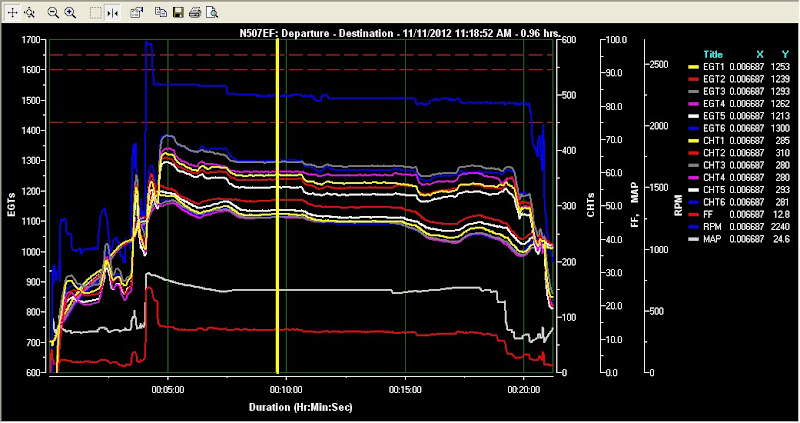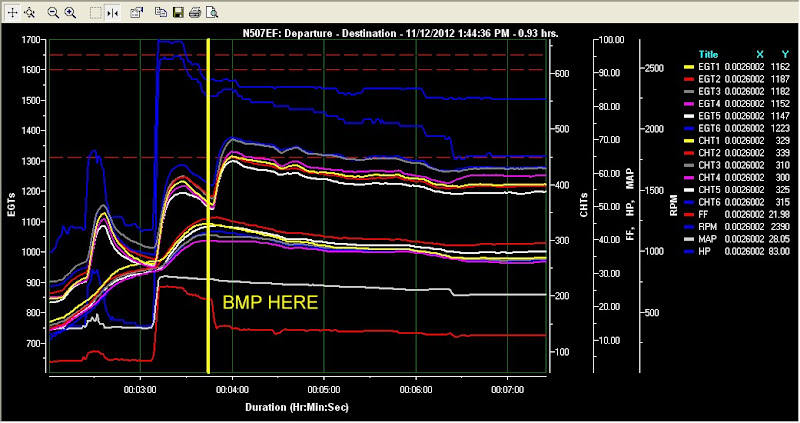With so much talk about the Big Mixture Pull,"BMP" and experts like Mike Bush,
as well as the good folks from APS advocating this kind of engine operating procedure, I decided to try out this old and now newly discovered engine management technique.
The gragh shows a one hour flight where I did everything I was tought not to do.
Based on what Mike Bush explains in the latest SA article I tried the following:
Full throttle, reduce RPM only "oversquare", BMP on climb out "1500 feet"
Climb out well lean of peak with Cylinder Head temperatures well below 380.
Mine dropped to less than 300 F but EGTs where much higher than on the rich side of peak. Fuel flow was about 5 GPH less than on the rich side of peak. The GAMI spread as calculated by the EG view software shows 0.00GPH
on this flight. All was done on mogasE10 which I have been using for almost a year now and avgas in the left tank only for take off and landing.
Looking at the numbers, I can't see anything wrong with my new technique.
High MP and low RPMs contribute to a much more quiet cockpit environment
and less friction loss apparently. The fuel savings are obvious and although my engine does not suffer from high temperatures of any kind, lower CHTs are even better.
Flame suit on,what do you think?

as well as the good folks from APS advocating this kind of engine operating procedure, I decided to try out this old and now newly discovered engine management technique.
The gragh shows a one hour flight where I did everything I was tought not to do.
Based on what Mike Bush explains in the latest SA article I tried the following:
Full throttle, reduce RPM only "oversquare", BMP on climb out "1500 feet"
Climb out well lean of peak with Cylinder Head temperatures well below 380.
Mine dropped to less than 300 F but EGTs where much higher than on the rich side of peak. Fuel flow was about 5 GPH less than on the rich side of peak. The GAMI spread as calculated by the EG view software shows 0.00GPH
on this flight. All was done on mogasE10 which I have been using for almost a year now and avgas in the left tank only for take off and landing.
Looking at the numbers, I can't see anything wrong with my new technique.
High MP and low RPMs contribute to a much more quiet cockpit environment
and less friction loss apparently. The fuel savings are obvious and although my engine does not suffer from high temperatures of any kind, lower CHTs are even better.
Flame suit on,what do you think?









